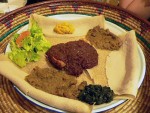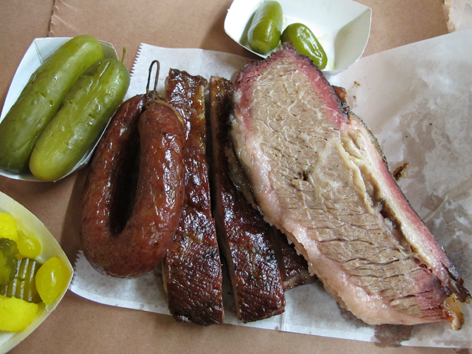
The typical spread, at City Market in Luling, Texas.
A meat-eater does not visit Central Texas—eclectic state capital Austin included—without making BBQ a priority. But what is BBQ, that most regional and fiercely beloved of American dishes, here? It’s a holy trinity of smoked brisket, pork ribs, and sausage, slow-cooked over big oak-fed pits in the manner introduced to the area—primarily to the towns of Lockhart, Luling, and Taylor, each within about an hour’s drive from Austin—in the mid-19th century by German and Czech settlers, who’d often smoke leftover cuts of meat from their butcher shops. The Texans loved it, took to calling it BBQ, and adopted the style as their own.
Nowadays, eating BBQ is a well-established tradition in the area, with its own set of rules dictating everything from how long the brisket is smoked for (anywhere for six to 24 hours) to how the meat should be served (on a butcher-paper-covered tray with white bread, pickles, onions, and your choice of sides) and how it should be eaten (with minimal distraction from any sauces, typically offered on the side only). Truly stellar BBQ can certainly be found within Austin’s city limits, but nothing beats the experience of lining up to place your order in the smoky, blackened pit rooms—and chowing down in the cash-only no-frills dining rooms—of Luling, Lockhart, and Taylor. If you’re anywhere near these towns, a road trip is imperative. (Bonus: You can alternate meat eating with wine tasting.)
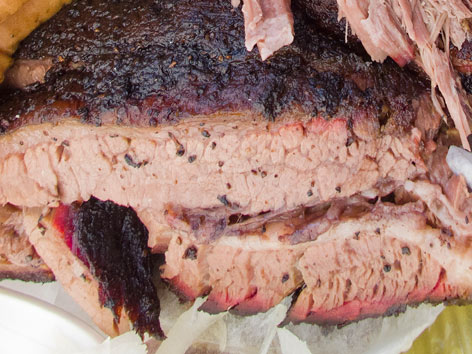
Brisket
Smoked beef brisket is king among Texas BBQ, and one bite of the good stuff tells you why. What starts as the tough cut of meat from the breast or chest of a cow gets rubbed with salt and pepper, then wood-smoked, typically with native oak, for anywhere from six to 24 hours—until the exterior “bark” is well-blackened atop a telltale pink smoke ring and the interior’s connective tissue and collagen are tenderized, resulting in marbled meat that’s magnificently toothsome, bursting with fatty, meaty flavor. It’s a simple yet nearly magical process that requires lots of skill on the part of the pit master—remember, sauces are purely optional, so there’s no covering up mistakes.
Read more about brisket in Texas.
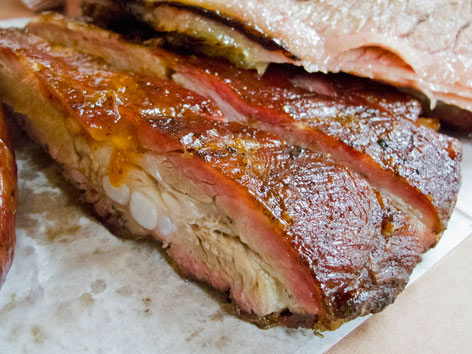
Pork ribs
The only dish of BBQ’s Big Three to put pig in the spotlight, Central Texas’s pork ribs—generally spare ribs—are smoked just enough so that the meat is moist and toothsome, but not quite fall-off-the- bone tender, with a nice blackened skin and rich smoky flavor. In Luling, we found our favorite: tender meat with smoky, porky flavor, the right amount of fat, and a crisp, tasty exterior “bark.”
Read more about pork ribs in Texas.
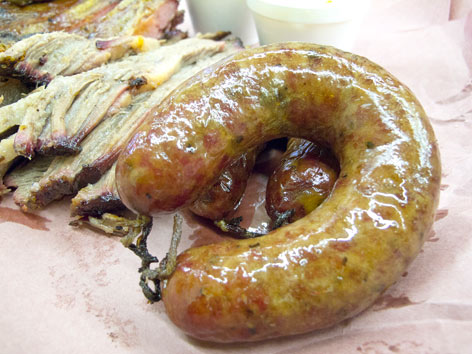
Sausage
These big ol’ rings of sausage, generally beef or a beef-pork mix, are often served whole with the string still tied to their ends, from when they dangled above the pit. Sometimes you’ll see flavors added, like cheese and jalapeño, but traditionally this is nothing but juicy meat. These plump, glistening “hot rings” from Lockhart had a snappy casing and a meaty, slightly peppery flavor—and the standard accompaniment of white bread and pickles made for a deliciously oil-soaking sandwich.
Read more about sausage in Texas.
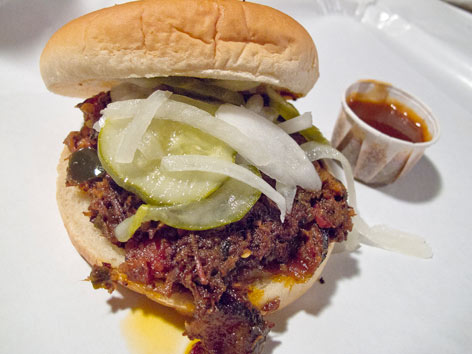
Bonus! Chopped beef sandwich
You might call it a BBQ by-product, but it shouldn’t be overlooked. For this sammie, the odd-looking, sometimes burnt bits and ends of that traditional slow-cooked brisket get chopped up, doused in some BBQ sauce, and served on a simple white-bread bun—traditionally with pickles and onions—in what’s essentially an absurdly delicious BBQ version of a sloppy Joe.










.jpg)
